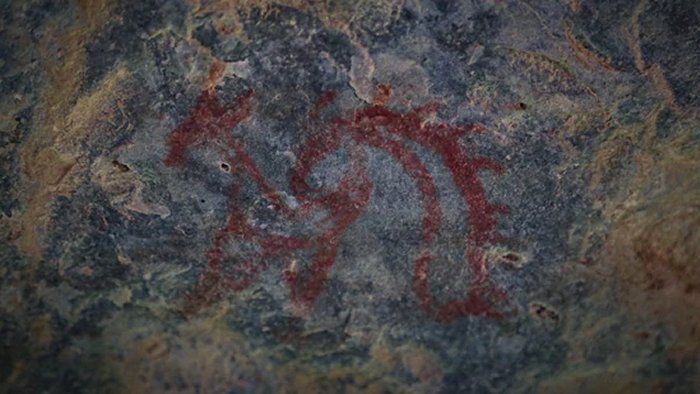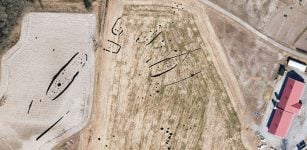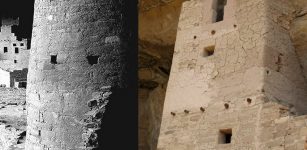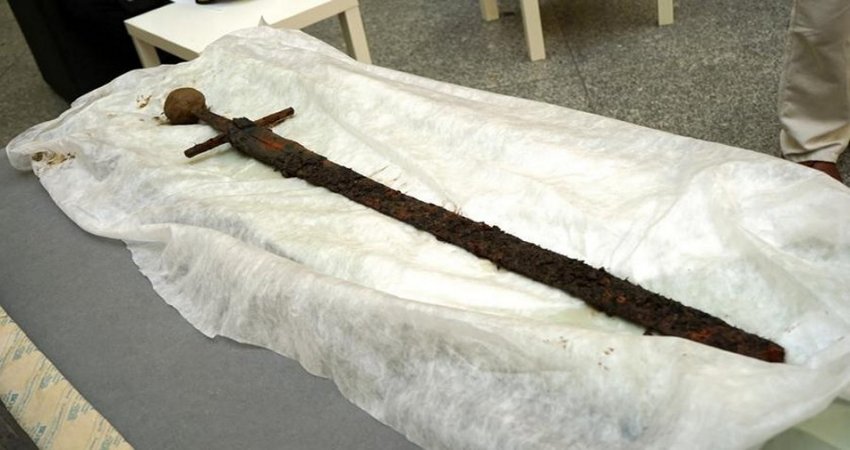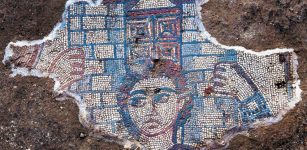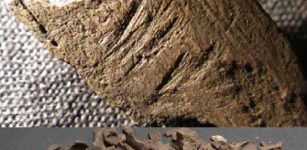Haryana Caves In Mangar Bani Hide An Ancient Secret – Are These The Oldest Cave Paintings In India?
Jan Bartek – MessageToEagle.com – Mangar Bani, a sacred ancient forest grove located in the Faridabad district in the Indian state of Haryana is not only home to beautiful trees, plants, birds, and animals. Here we also find the intriguing Haryana caves that hide an ancient secret.
This prehistoric site is of course of great interest to archaeologists who suggest they may have found the oldest cave paintings in India. If true, this incredible archaeological discovery will shed new light on the history of ancient India.
Mangar Bani forest in India. Credit: The Better India
The cave paintings were discovered recently, in May this year, and preliminary studies show the rock art was created during the Upper Palaeolithic Age which means the drawings are between 50,000 and 12,000-year-old!
Residents of the Manger village, and neighboring villages have long been aware of the Haryana cave paintings, but to the Haryana government’s museum and archaeology department, it is a new discovery that requires further studies.
Most likely, the cave paintings remained relatively undiscovered over the years due to thick vegetation.
“The caves are in an area that is difficult to reach, so we have to plan before going. It is on a high cliff and the terrain is very difficult, it is the maximum difficulty level in terms of climbing. This is probably why the caves and the art survived as well, because people don’t normally go there,” environmental activist Sunil Harsana who spotted a prehistoric cave painting in the Mangar Bani hill forest told the Indian Express.
One of the paintings found in the Haryana caves. Credit: Sanchit Khanna/ Hindustan Times
“So far, cave paintings in Delhi-NCR have only been found here. Most pre-historic sites have been traced in the Aravalli region. The paintings are yet to be dated but at least some of them belong to the Upper Palaeolithic period in all likelihood. We are viewing the paintings in continuation with the Soanian culture which has been found in Shivalik hills, Narmada and Aravallis,” said Banani Bhattacharyya, deputy director of the department of archaeology and museums.
“The team encountered cave paintings comprising images of human figurines, animals, foliage, and geometric, some that have paled over time, but others that are still very visible. It also encountered rock art and open-air ceremonial sites. While some could be spotted in the open air, a majority of them are on the ceilings of the rock shelters,” the Hindustan Times reports.
“Though tools from the Palaeolithic Age have been identified earlier in parts of the Aravallis, it is for the first time that cave paintings and rock art of a large magnitude have been found in Haryana,” Banani Bhattacharyya, deputy director of the department of archaeology and museums said emphasizing this discovery is extremely significant.
The next step will now be to determine the age of the rock art and this can be accomplished by examining stone tools, and compare the cave paintings with similar ones found in other regions of the country.
Currently it is evident, “the caves and the paintings themselves are reminiscent of Bhimbetka in Madhya Pradesh, which is home to the oldest known cave art in India, dating back to the Mesolithic Age (around 10,000 years ago).
The Mangar cave art is 20,000-40,000 years old, according to Bhattacharyya, but this is something that can be established through archaeological dating,” the Hindustan Times report.
Another cave painting discovered in Mangar bani. Credit: The Indian Express
Studies of the Haryana cave paintings will also shed light on their ancient creators. “Some of the caves have rock art while others have paintings, but only a few of the paintings are in good condition, the others have deteriorated. The art includes what appear to be symbols, markings, some are drawings that are very old, but what exactly it is, only the archaeology department will be able to tell,” Harsana told the Indian Express.
See also: More Archaeology News
What is also necessary is to protect this ancient site. Some years ago, a legal battle “was waged over whether Mangar Bani was a forest or farmland,” Better India reports. Thankfully, villagers of Mangar Bani saved the beautiful forest from builders. Now it is time to save the archaeological site and that is already in progress. According to the Indian Express, Haryana Principal Secretary Ashok Khemka said: “We will give state protection to Mangar Bani forests under the Ancient and Historical Monuments and Archaeological Sites and Remains Act, 1964, because of the presence of a large number of stone age site with cave paintings and tools of the Palaeolithic age that have been found there.”
Archaeological discoveries in India have been highly significant this year. Just recently, in May this year, scientists announced they had spotted giant geoglyphs near the Golden City Jaisalmer in India’s Thar Desert. It is believed these may be the world’s oldest geoglyphs! Now we have learned Indian’s oldest cave paintings may have been discovered.
Written by Jan Bartek – MessageToEagle.com – AncientPages.com Staff Writer


